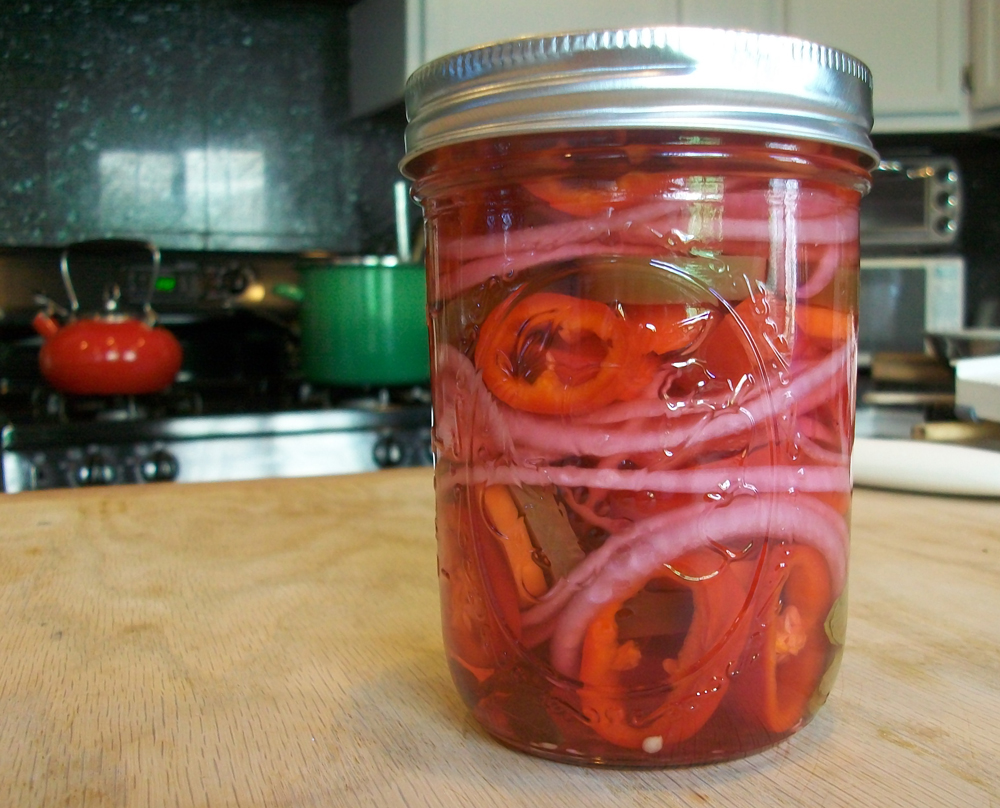I turned to the nice people behind Emmy's Pickles and Jams, Jarred SF Brine and Paulie's Pickling for advice and they served up loads of tips on preserving peppers so we can continue eating them long after the season ends. Each of them makes a version of pickled jalapeños, some inspired by the classic blend found at taquerías throughout the Mission District.
"Jalapeño-carrot was one of the first products we started with," says Emmy Moore, who co-founded Emmy's in 2010. "We used to be based in the Mission and wanted to do something that spoke to that community."
She ran through six trials before settling on her final recipe, which includes whole jalapeños, carrots and black pepper. Emiliana Puyana of Jarred uses a base recipe of sliced red and green jalapeños, carrots and red onion, but admits she never stops trying to perfect her formula.

Red and green jalapeños share the spotlight in Jarred SF Brine’s pickled pepper medley.
"They are super yummy and delicious, spicy and can go on pretty much anything -- a sandwich, taco, salad, you name it," says Puyana, who began selling pickled products in late 2011.
The process they each use is basically the same: They sanitize canning jars before stuffing them with cleaned vegetables. The vegetables are covered with a hot brine of vinegar, water, salt, aromatics and possibly sugar. The lids are sealed tightly and submerged in boiling water. Paul Ashby of Paulie's Pickling, however, skips the canning process and instead refrigerates the pickled peppers immediately after adding the brine, which he believes helps the vegetables to retain their texture.
The same process may be used with pickling sweet peppers and other vegetables, though the recipe would differ. Moore and Ashby only pickle hot peppers, but Puyana also sells a grilled corn and sweet pepper combo made with sweeter brine kicked up with chili flakes.
It's important to taste peppers beforehand because the heat level may vary, especially later in the season when they seem to get hotter.
"One may taste like a green pepper, one may set your mouth on fire," Ashby says. "Find out what the flavor is like, and if there isn't enough heat, add dried peppers to get a consistent heat throughout the product. That's a good way to get it to the heat you want without effecting the flavor."
The vegetables should be processed when they are as ripe as possible. In other words, don't wait until the peppers are about to turn before breaking out the canning jars.
"Use the freshest stuff possible," Moore says. "You want it to be crisp, fresh."
Ashby recommends local farmers' markets as the top source for fresh vegetables. Keep an eye out right now for end-of-season peppers at farmers’ markets throughout the Bay Area.
"That's always your best bet," he says. "Things start to break down, become mushy, and as they deteriorate you get off flavors. One off flavor and that could ruin the whole batch."
Puyana recommends using medium, fleshy peppers for pickling that won't disintegrate over time, such as jalapeño, serrano, bell, gypsy, banana, cherry and piquillo peppers. Padrón and shishito peppers may be too delicate, she said, while hotter peppers, such as habanero and cayenne, may be used to enhance recipes but are often too hot for most people to eat on their own.
When it comes to pickling, cleanliness and sanitation are key, Ashby says.
"You have to be super vigilant about how clean you are," Ashby says. "There are a lot of rules you have to stick to."
Make sure the brine completely covers the vegetables but leave a little bit of "head space" so you can create a seal, Moore says. Or you can take Ashby's cue and simply store the vegetables and brine in a container in the fridge.
One last thing: don't throw out that pickling juice. It can be reused in several ways, such as adding some punch to salsa or a Bloody Mary.
"Throw more peppers in it, wait a week or two and they will be pickled again," Moore says. "The brine will become infused with pepper flavor. It's good for meat marinades and you don't have to worry about bacteria."
Recipe: Jarred SF Brine’s Pickled Jalapeños
Yields: 2 16 oz. jars
Preparing the Jars:
- Fill a large pot with water and bring it to a boil, making sure that the pot is large enough to hold the filled jars. Do not overfill the pot because the water level will rise when the jars are submerged.
- Place the empty jars in the boiling water for one minute.

Submerge the jars in boiling water
- Remove the jars with a pair of tongs.
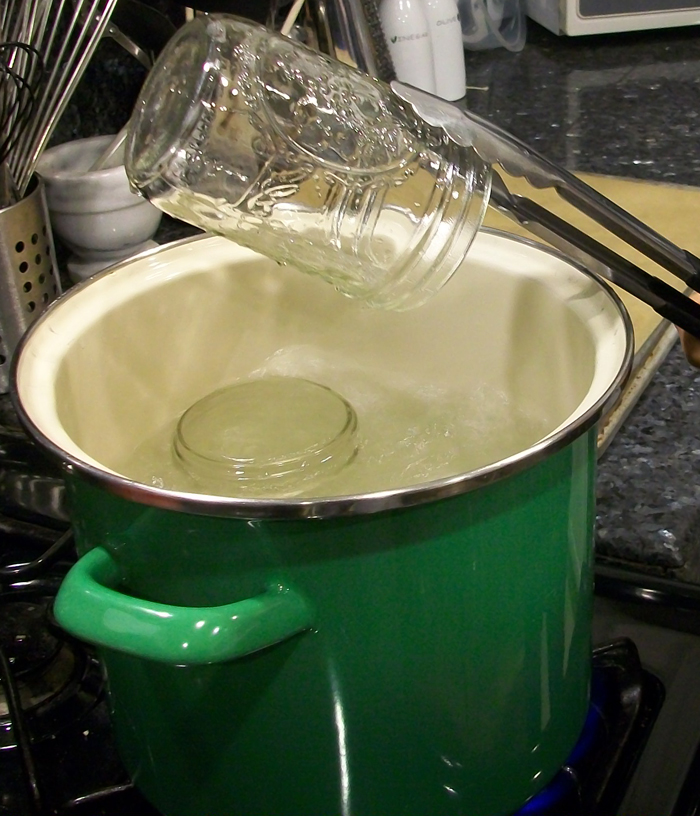
Carefully remove canning jars from pot.
- Place upside down on a counter lined with parchment paper.
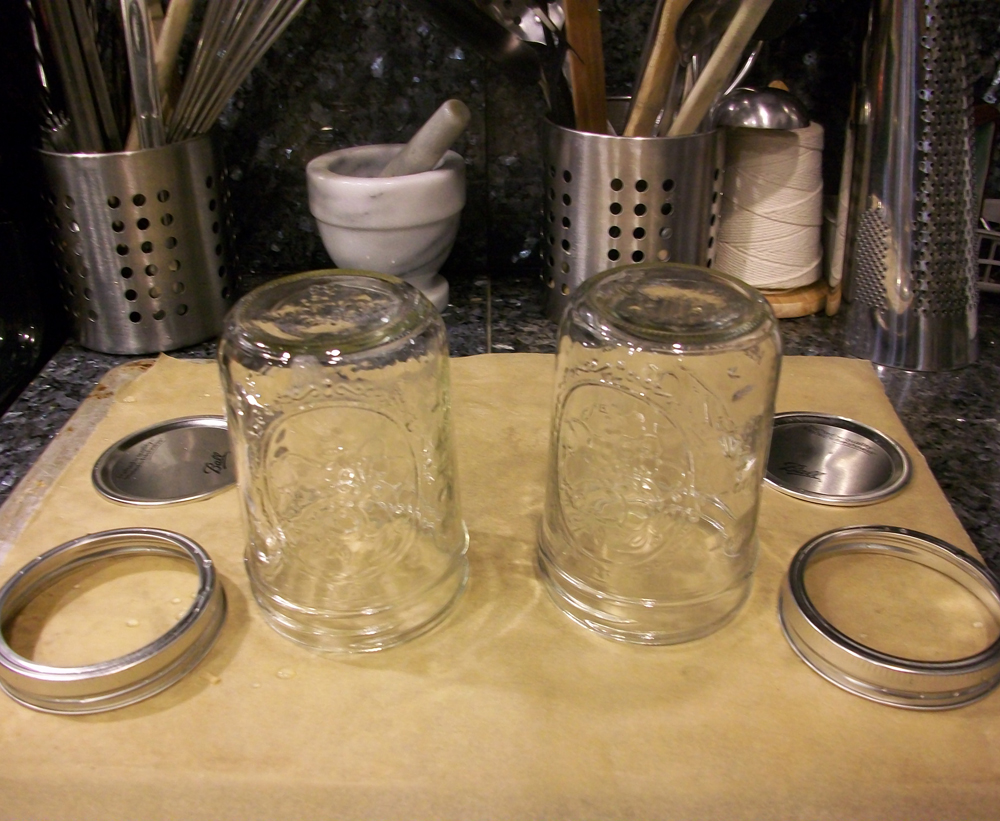
Set sanitized jars aside on parchment paper until ready to use.
- Repeat this step with the lids.
Vegetables
Ingredients:
- 7 jalapeños, a mix of red and green, sliced into 1/4-inch coins (should yield about 2 cups)
- 1/2 cup thinly sliced carrot (approximately 1 medium carrot; use a mandoline if possible)
- 1/2 cup thinly sliced red onion rings (approximately 1/2 of a small red onion; use a mandoline if possible)
Instructions:
-
- Combine all ingredients in a bowl and mix, wearing gloves if mixing by hand. The yield should be roughly 3 cups of vegetables.
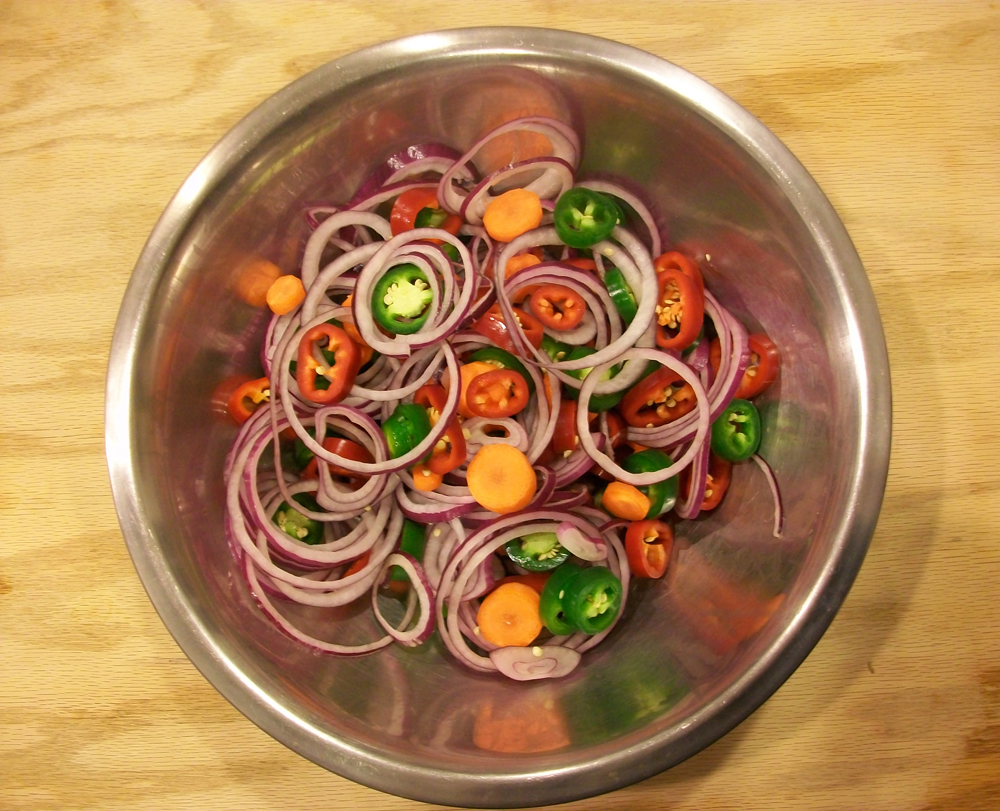
Red and green jalapeños, red onion and carrot are ready to be jarred and pickled.
For the Brine
Ingredients:
1 1/4 cup white wine vinegar
1 1/4 cup water
2 tablespoons salt
2 tablespoons sugar
1 teaspoon fennel seed
1 teaspoon coriander seed
1/2 teaspoon black peppercorns
2 sprigs of fresh Mexican oregano
Instructions:
-
-
- Combine all ingredients except the oregano in a stainless steel pot and bring to a boil.
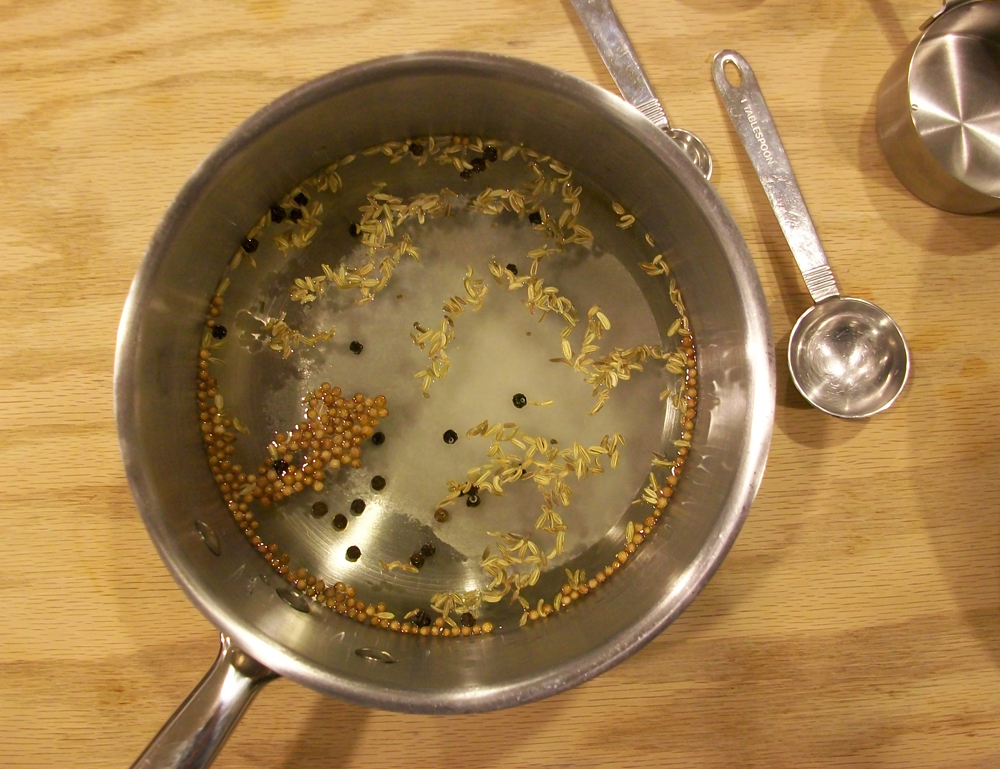
This hot brine includes white wine vinegar, salt, sugar and aromatics.
- Place one spring of oregano in the bottom of each jar. Fill the jars with the prepared vegetables (each jar holds about 1 1/2 cups).
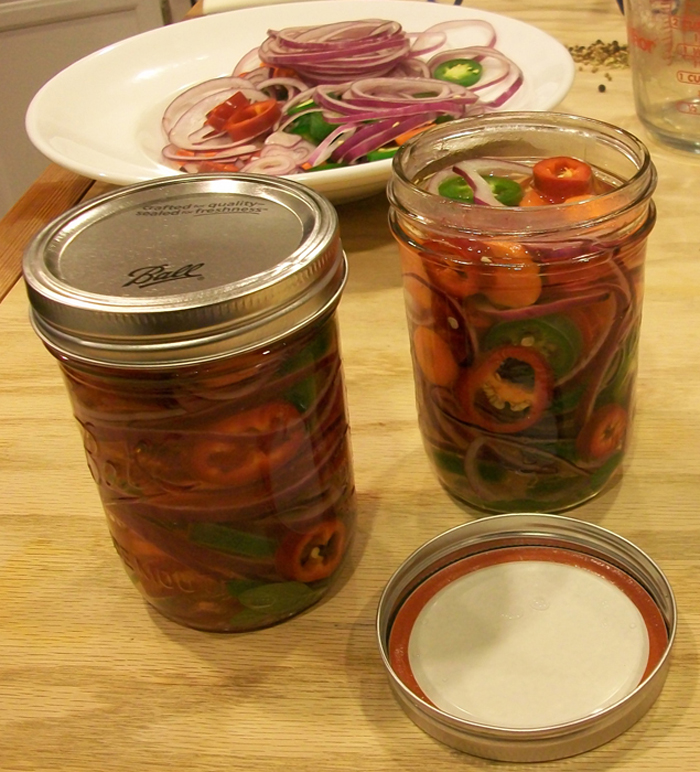
Pack vegetables snugly into jars, but leave enough room that will allow the brine to penetrate.
- Strain the brine into a measuring cup and pour over the vegetables. Make sure to leave a 1/4 of an inch of space and place the lid on securely. The jar is now ready to be processed.
- Completely submerge the jar into the pot of boiling water for 3 minutes. Remove the jar from the water with tongs and let cool at room temperature.
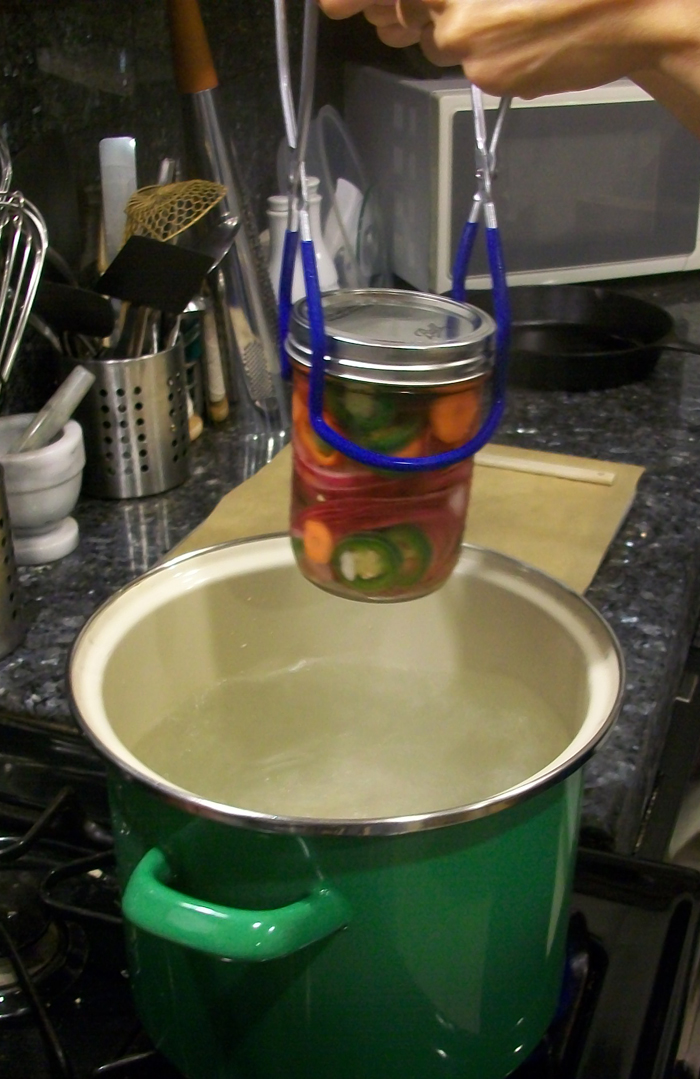
Boiling the jars helps to create a tight seal and kill any lurking bacteria.
- The pickles will be ready to eat in 10 days.
